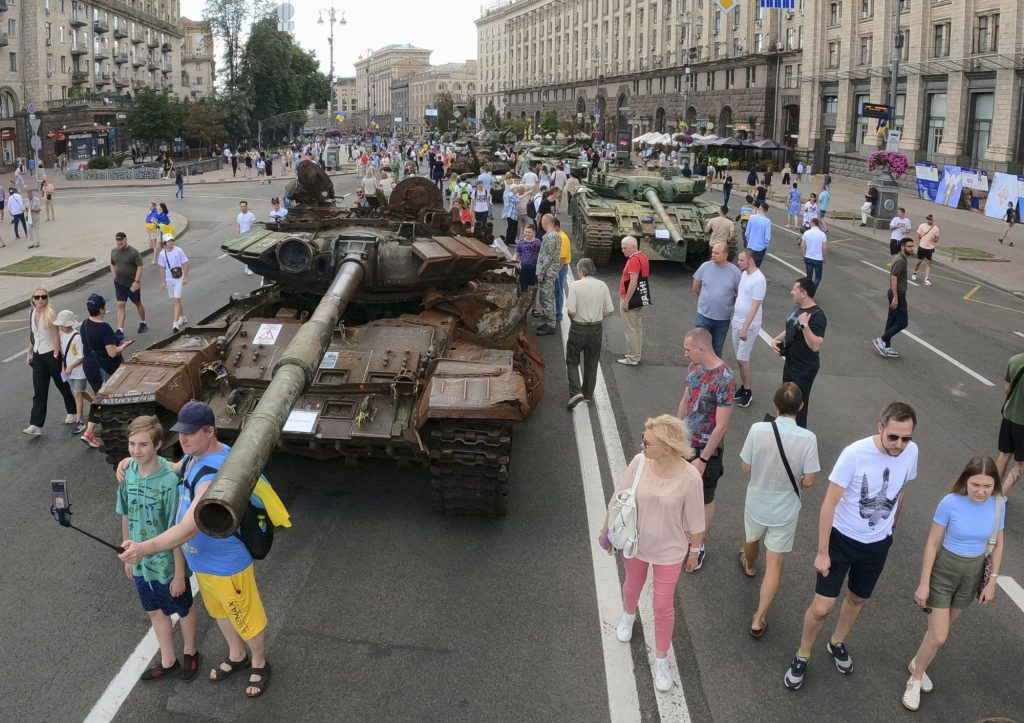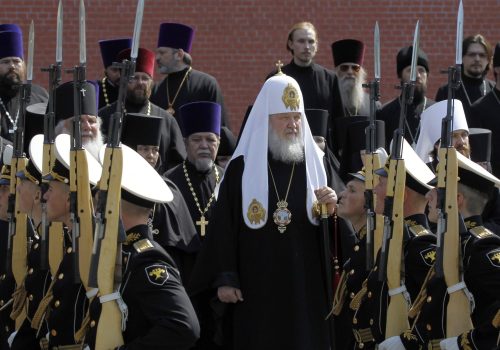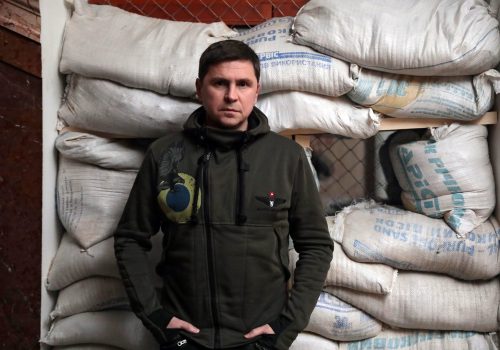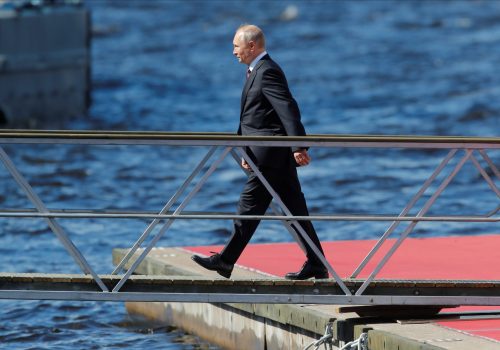Over the past eighteen months, Ukraine’s ability to overcome the destruction and disruption created by Russia’s invasion has been so striking that some outside observers have even questioned the reality of the war. Every so often, video footage of Ukrainians engaged in everyday activities appears on social media accompanied by suggestions that the situation in Ukraine cannot be as serious as claimed if it is still possible to visit restaurants, attend pool parties, or stroll in the park.
These cynical assertions completely miss the point. Signs of normality in today’s Ukraine are not proof that the war is somehow exaggerated or fake; they are evidence of the courage and resilience that are helping Ukrainians to handle the horror of Europe’s biggest conflict since World War II.
Ever since the Russian attack began in February 2022, Ukrainian resilience has been one of the defining features of the war. When Vladimir Putin took the decision to launch his invasion, he seems to have genuinely believed that any armed resistance would quickly melt away and fully expected the Ukrainian state to collapse within a couple of days. Instead, the Ukrainian military fought back with great skill and bravery, inflicting punishing losses on the Russian invaders and winning the admiration of the watching world.
Stay updated
As the world watches the Russian invasion of Ukraine unfold, UkraineAlert delivers the best Atlantic Council expert insight and analysis on Ukraine twice a week directly to your inbox.
Beyond the battlefield, Ukraine’s state structures have also proven surprisingly durable. Ukrainian President Volodymyr Zelenskyy set the tone during the initial hours of the war by declaring his intention to remain in the Ukrainian capital. Elected officials across the country soon followed suit, with parliament regularly convening in Kyiv and municipal authorities heavily involved in security and humanitarian responses to the Russian invasion.
The wartime performance of Ukraine’s public sector has been equally impressive. Despite the constant threat of Russian bombardment, Ukrainian trains have continued to run on time, playing a key role in the evacuation of the civilian population and serving as a lifeline for the blockaded Ukrainian economy. The Ukrainian postal service has often been among the first organizations to resume operations in newly liberated regions, and has even found time to launch a series of headline-grabbing postage stamps honoring the Ukrainian war effort. Meanwhile, shrewd management by the National Bank of Ukraine has prevented a currency collapse and maintained a significant degree of economic stability. The country’s power grid was able to withstand a six-month campaign of Russian airstrikes and even resumed energy exports in spring 2023.
Similar robustness has been on display throughout the private sector. Every single company active in Ukraine today has a unique story to tell of wartime strength and tenacity, but all are united by the common denominator of Ukrainian resilience. Countless Ukrainian factories, agribusinesses, office centers, shopping malls, restaurants, and hotels have each found creative ways to remain active while navigating wartime challenges including regular Russian air raids and energy blackouts, the blockade of Ukraine’s Black Sea ports, and the breakdown of established supply chains. In most other European countries, any one of these factors would have been enough to bring daily life to a standstill; Ukrainians have just shrugged it all off and carried on regardless.
Thanks to the miracles performed by Ukraine’s mobile operators and internet providers, Ukrainians have remained connected throughout the war. Incredibly, the country’s vibrant IT industry has actually grown since the onset of the invasion, with a rapidly expanding ecosystem of tech startups delivering drones and other innovative kit to the Ukrainian military. The Ukrainian banking system has also proven rock solid, with a high degree of prewar digitalization helping to minimize economic disruption amid the devastation of Russia’s onslaught.
None of this could prevent serious economic damage, of course. Ukraine’s GDP crashed by 29.1% in 2022, according to the country’s State Statistics Service. Nevertheless, at a time when Russia is actively pursuing the complete destruction of Ukrainian statehood, this year’s modest growth forecasts are little short of astounding. The past eighteen months have been the ultimate stress test, and the Ukrainian economy has passed with flying colors.
Eurasia Center events

Ukraine’s exceptional adaptability owes much to the country’s ample prior experience of coping with crisis conditions. After all, for the vast majority of Ukrainians, the entire 1990s was one long crisis. The country then went through extended periods of political turbulence sparked by the 2004 Orange Revolution and the 2014 Euromaidan Revolution, along with the Russian invasion of Crimea and eight years of simmering war in eastern Ukraine. For Ukrainians who have grown up and come of age since the Soviet collapse, instability has never been far away. This is not a legacy anyone would have actively pursued, but it has fostered a toughness and fortitude that are proving critical as the country fights for survival against Russia’s ongoing invasion.
These qualities will be much needed in the months ahead. The high costs and slow progress of Ukraine’s current counteroffensive are already testing the nation’s resolve, while the steady stream of Russian bombings and other atrocities weigh heavily on the deeply traumatized Ukrainian population. For now, the available data indicates a strong commitment to fight on, with recent polls consistently identifying overwhelming opposition to any kind of compromise with the Kremlin. This resolute mood reflects the existential nature of the conflict; Ukrainians are well aware of Russia’s genocidal agenda and recognize that if they stop fighting, their country will cease to exist.
All this is viewed with deep displeasure and mounting alarm in the Kremlin. With any lingering prospects of a decisive Russian military victory now long gone, Putin is pinning his hopes on outlasting the West and isolating Ukraine before eventually breaking the country’s will to fight. The Russian dictator is actively preparing for a long war and appears convinced that the democratic world will eventually tire of supporting Ukraine. Unfortunately for Putin, it is difficult to imagine any Western leader abandoning the Ukrainian people unless their determination to resist Russia begins to visibly wane.
This has been the case since the early days of Russia’s invasion, when the sheer audacity of Ukraine’s resistance profoundly impacted outside audiences and proved instrumental in winning over public opinion throughout the Western world. This popular support for Ukraine’s cause helped persuade Western leaders to provide the ever-expanding quantities of military aid that have transformed the course of the entire war. If millions of ordinary Ukrainians had not demonstrated such inspirational bravery, it is entirely possible that the West would have chosen to stand aside, much as it did during Russia’s 2008 invasion of Georgia and the 2014 occupation of Crimea. That did not happen in spring 2022, and it is unlikely to happen as long as Ukraine’s remarkable resilience remains intact.
Peter Dickinson is editor of the Atlantic Council’s UkraineAlert service.
Further reading
The views expressed in UkraineAlert are solely those of the authors and do not necessarily reflect the views of the Atlantic Council, its staff, or its supporters.

The Eurasia Center’s mission is to enhance transatlantic cooperation in promoting stability, democratic values and prosperity in Eurasia, from Eastern Europe and Turkey in the West to the Caucasus, Russia and Central Asia in the East.
Follow us on social media
and support our work
Image: People gather around captured Russian tanks on a street in Kyiv on Aug. 24, 2023, as Ukraine marks Independence Day amid the war with Russia. (Kyodo)




